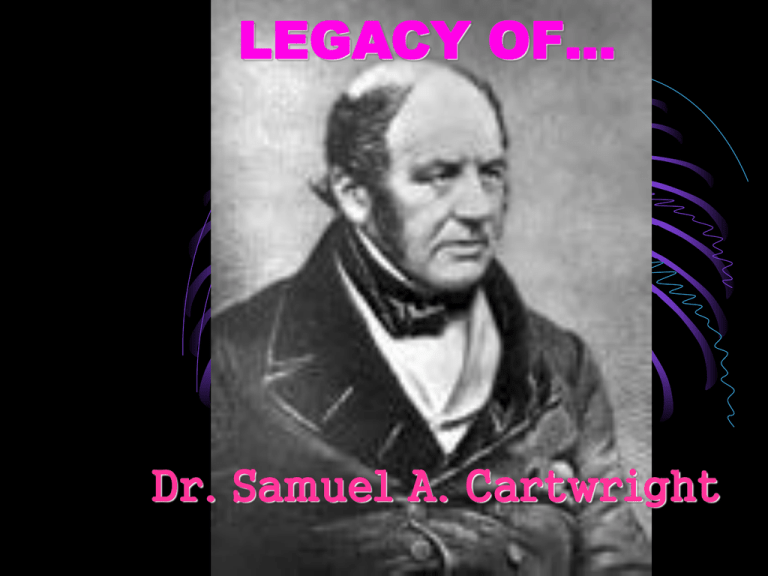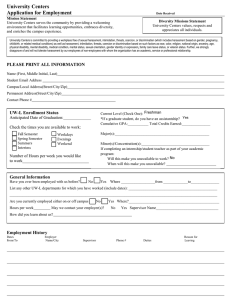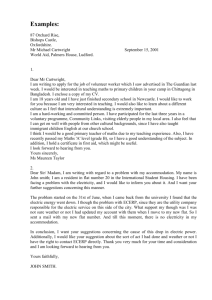LEGACY OF… William Tuke
advertisement

LEGACY OF… Dr. Samuel A. Cartwright • Cartwright was born at Northampton on November 3, 1793. • In 1812, he began his medical training as an apprentice to Dr. John Brewer. • He attended the University of Pennsylvania Medical School • Cartwright was at one time a surgeon under General Andrew Jackson. • Dr. Cartwright married the former Mary Wren in 1825, and they had one child. • He practiced medicine in Huntsville, Alabama, then Natchez, Mississippi, and finally New Orleans, where he relocated in 1858. • Dr. Samuel Cartwright was a highly respected Southern author who wrote about medical issues. • Even though he had studied under the abolitionist Dr. Rush in Philadelphia, Cartwright contributed ideas and literature to those southerners who defended slavery. • In 1851, he identified that two mental disorders, Drapetomania and Dysethesia Aethiopica was the cause of laziness among slaves. • He quoted…”The disease is the natural offspring of Negro liberty-the liberty to be idle, to wallow in filth, and to indulge in improper food and drinks. " Drapetomania • The desire to flee from servitude. • He stated that “it’s a mental disorder akin to alienation.” • Cartwright suggested that Negroes should be kept in a submissive state and treated like children, with "care, kindness, attention and humanity, to prevent and cure them from running away. " • If they nonetheless became dissatisfied with their condition, they should be whipped as a prevention against running away. • In describing his theory and cure for drapetomania, Cartwright relied on passages of scripture dealing with slavery. Dysaethesia Aethiopica • A disease "affecting both mind and body. • According to Cartwright, dysaethesia aethiopica occurred “more among free negroes living in clusters by themselves, than among slaves on our plantations, and attacks only such slaves as live like free negroes in regard to diet, drinks, exercise, etc." — indeed, according to Cartwright, "nearly all [free negroes] are more or less afflicted with it, that have not got some white person to direct and to take care of them." • Cartwright felt that dysaethesia aethiopica was "easily curable, if treated on sound physiological principles." Insensitivity of the skin was one symptom of the disease, so the skin should be stimulated. • The best means to stimulate the skin is, first, to have the patient well washed with warm water and soap; then, to anoint it all over in oil, and to slap the oil in with a broad leather strap; then to put the patient to some hard kind of work in the sunshine. • According to Cartwright, after the prescribed "course of treatment" the slave will "look grateful and thankful to the white man whose compulsory power ... has restored his sensation and dispelled the mist that clouded his intellect." • Due to the facts that during the antebellum period, southerners largely considered blacks to be racially inferior to whites. • They sought "scientific proof" for their argument to counter the "human rights" claims of the abolitionists. • His theory was highly accepted because his arguments were in line with those of such pro-slavery defenders. • Cartwright viewed blacks as people largely incapable of performing certain duties. • Drs. Alvin Poussaint and Peter Breggin were two outspoken opponents of his theory. >>>>MY VIEW<<<< • OMG….this diagnosis is cruel and it’s awful because the philosophy and policies that guided the treatment of our ancestors still influence our treatment today….that’s just not right!!!! Dr. Samuel A. Cartwright (November 3, 1793 – May 2, 1863 )



